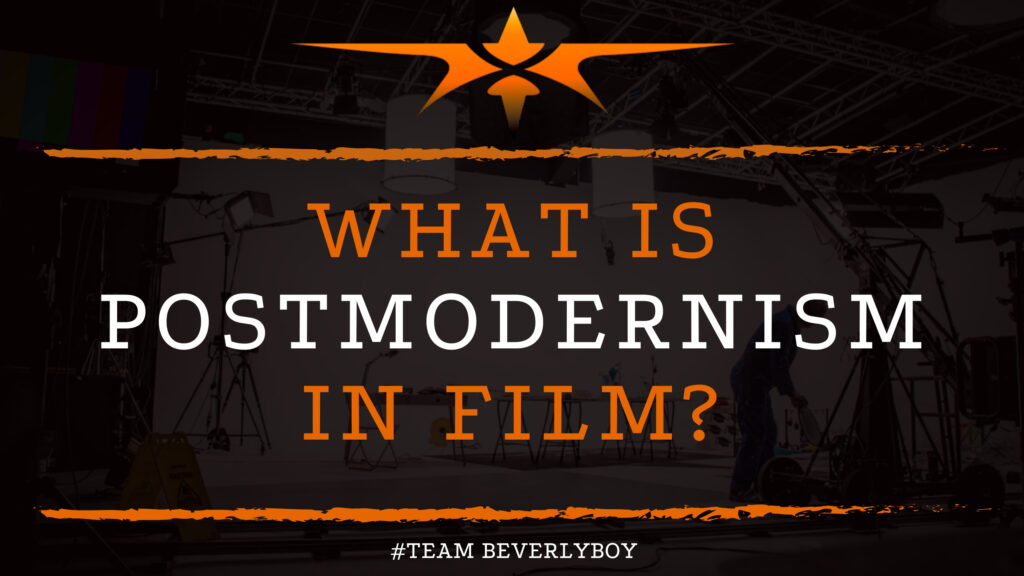What is Postmodernism in Film?
Postmodernism is a term that you might have heard before, but it’s likely that you heard it used in a manner that was potentially inconsistent or otherwise unnatural. Whenever the term postmodernism in film is used, it’s typically done so in such a way that it basically subverts mainstream conventions of narrative structure in exchange for something of a more postmodern appeal, but what does this all mean?
What is Postmodernism in Film?

Selling a Book for Film Rights
You’re probably thinking, if there’s a such thing a postmodernism, then it probably is the opposite of or the outcome of something that is after modernism. Thus, if you could define modernism, then postmodernism would likely be what comes next.
So what is modernism? It’s a philosophical movement in which artists were self-conscious about their works and about experimentation with established forms. Modernist artists used traditional perspectives to create their art and thus, modernist filmmakers would use traditional, mainstream techniques in their filmmaking.
Postmodernism then, is what came after modernism. Postmodernism represents a philosophical movement that came in the latter half of the 20th century, after modernism which was dominant in the 19th and early 20th centuries. Artists that used postmodernism were likely to reject the typical narratives that were so common of a modernist world and largely went against the mainstream.
Thus postmodernism would criticize beliefs that were once valued and longstanding. They went against human nature and social progress, instead bringing about a darker viewpoint of the world in which irony would be more popular than the consistency of mainstream societal norms.
Postmodernism in film would go against the grain, instead of the traditional linear narrative, postmodern films would tell a story completely out of order and out of the ordinary. For example, Pulp Fiction is a postmodern film. You might recall the narrative structure of this film and other postmodern films as being more complex and certainly having a non-linear storyline.
Characteristics of Postmodernism in Film
Postmodernism in film would bring about a variety of characteristics including irony and a hyper reality. Rather than accepting the social norms and values that had longstanding recognition and in which most people believed, postmodernism would step outside the box. Many postmodern films bring about themes of paranoia, distortion of time, and a sense of unpredictability.
While actually defining postmodernism is a challenge, it’s quite easy to call out the characteristics that could make a film appear to be more along the lines of postmodern versus modern. These films frequently draw upon a non-linear structure in order to create audience engagement. They’re the type of films that if you do not pay attention, you’re bound to miss something or to otherwise get lost.
Examples of Postmodernism in Film
One of the prime examples of a postmodern film would be Pulp Fiction but there are certainly many others too. For example over the years, postmodernism would become more popular within the film industry as filmmakers would step outside their comfort zone and take leaps of artistic faith in order to achieve amazing outcomes. You might recall the film Monty Python and the Holy Grail? This is a postmodern classic that might be one of the funniest films of our time. In true postmodern fashion, this film utilizes temporal distortion and various other elements to create a world in which what we know and accept is all but visible. Everything about it is questionable.
Works of postmodernism in film frequently have various expectations and are often incredibly popular among audiences. Throughout the 1980s and 90s a number of postmodern films would be introduced. Blade Runner was one of many postmodern films that was exhibited in this time period as was Scream and Austin Powers: International Man of Mystery. In addition to these postmodern classics various other sequels to the first Austin Powers film would be introduced.
Hyperreality is also common in postmodernism in film. You might recall The Truman Show? This film incorporated plenty of hyper realism that would prevent the storyline from being anything other than an amazing façade that mixes reality with what could be nothing more than absolutely impossible.
Postmodernism in the film industry more recently has included films such as Eternal Sunshine of the Spotless Mind and Inception . Additionally, postmodernism has given way to an era of posthumanism that is largely popular in the industry. Posthumanist works by various directors seek to suggest a variety of potential insights into humanity that would otherwise never be examined.
So what is postmodernism in film? It’s the use of a variety of techniques and story plots to derive a sense of irony and dramatic hyper reality while delivering a film narrative in any manner but the typical. Most postmodern films take a turn that would not be considered the “norm” of society, but could create impressionable and memorable moments in cinema that audiences have come to know and love.

